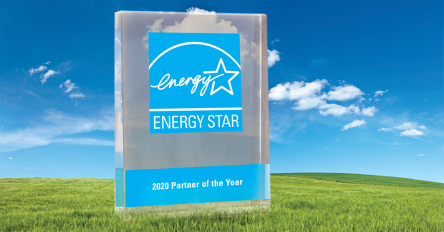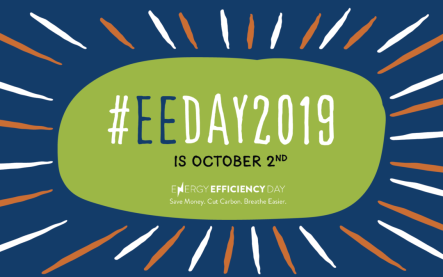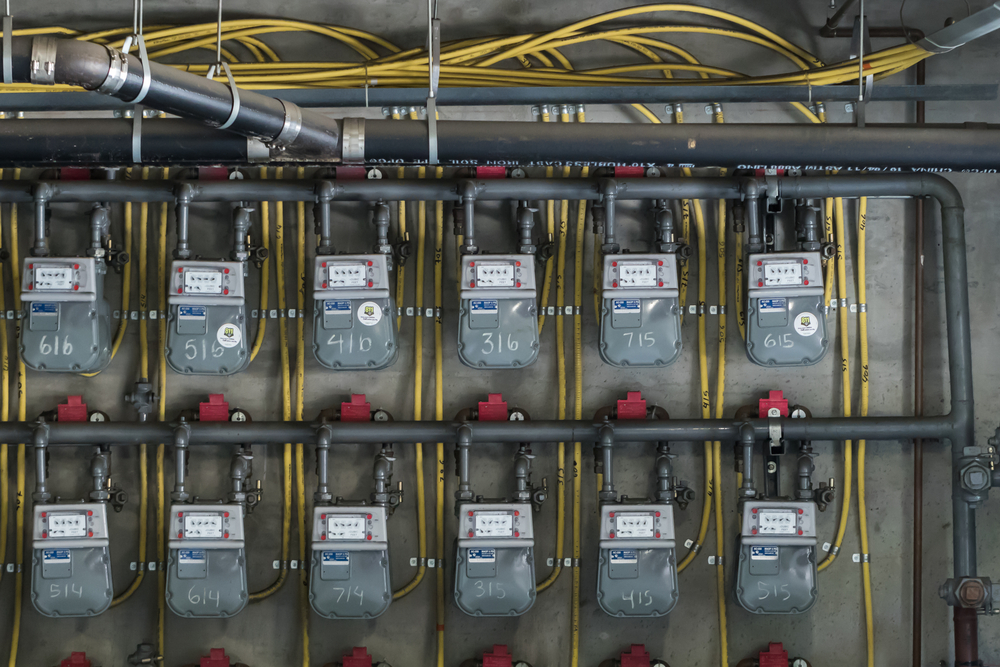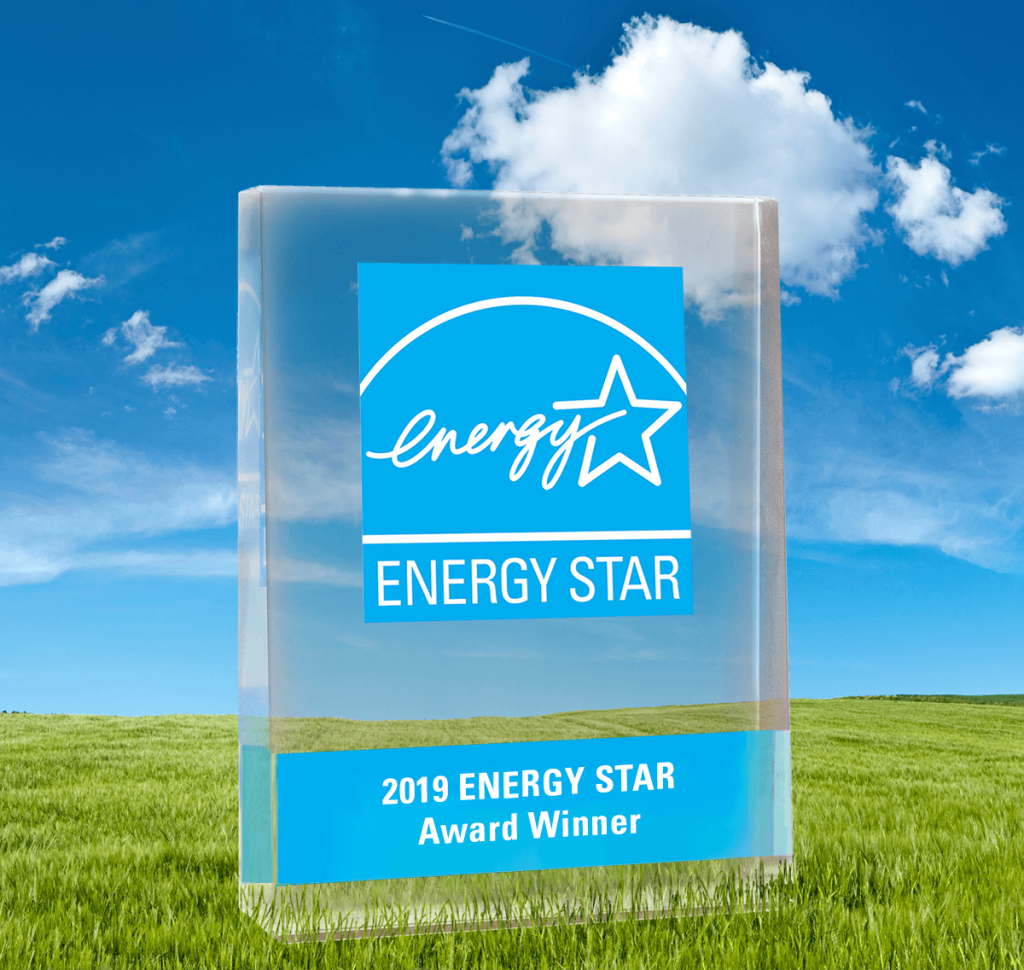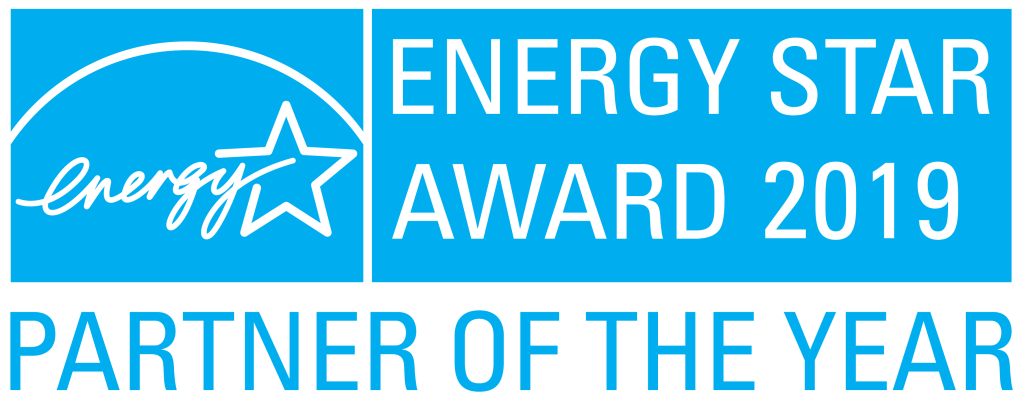When you invest in your energy strategy, the rewards are proportionate. Simply put, the upgrades can pay for themselves. You just have to get the ball rolling first. That was just one of the key takeaways from our recent webinar on energy efficiency with McKnight’s Senior Living. Randy Moss of Yardi led the discussion on ENERGY STAR benchmarking and best practices for providers, and he was joined by Christopher Wright from Merrill Gardens, who shared his company’s own experience with tracking energy usage and reducing spend. Merrill Gardens’ road to energy success Starting in 2016, Merrill Gardens was required to record and report their energy usage by the city of Seattle. And at first, everything was done manually. Staff were pulling data from paper bills and accounting systems to upload into ENERGY STAR for benchmarking. Eventually, the city’s utility provider enabled automated data sharing, which simplified the entire process. The state of California soon followed with regulatory requirements, and seeing the writing on the wall, Merrill Gardens began rolling out benchmarking at all of their communities nationwide. Like in Seattle, many utilities needed manual data entry at first, but nowadays, the majority allow automated data transfer. By late 2019, Merrill Gardens had a year’s worth of data, which gave them great visibility into their buildings’ usage compared to one another. “Based on those sorts of trends, we already had the ability to identify buildings to focus special attention on for CapEx and operation improvements,” said Wright. Unfortunately, the pandemic brought new hurdles, but that only sharpened their focus. “In early 2020, like everyone else, we discovered our resources were suddenly and unexpectedly limited, while at the same time, savings and operational efficiencies were even more important,” said Wright. “Partnering with Yardi over the last...
Energy Matters
Strategy for Senior Living
As the COVID-19 crisis drives up labor and equipment costs in senior living, providers are looking for sure-fire ways to save without sacrificing on care or quality. One avenue that few providers have pursued is energy management. Not considered a significant challenge by many, utility spend actually ranks as the third highest expense, after payroll and food. It’s also much easier to tackle from a cost-control perspective than you might think. Yes, swapping in LED light bulbs is one way to shrink the energy bill, but the real advantages (and savings) start with just knowing how much energy is used. By benchmarking your communities’ energy consumption, and you open up many possibilities to conserve. There’s more value in a cohesive energy strategy than just saving money, too. Many residents appreciate and look for a building that follows sustainable practices. In fact, the baby boomers are more eco-conscious than their Gen X and millennial counterparts are. Those over 65 are three times more likely to say they live in environmentally friendly ways “all the time.” If that weren’t reason enough to revisit your energy approach, consider that state, county and local jurisdictions are increasingly asking real estate operators — senior housing included — to record and report on their usage. Take Seattle for example. Back in 2013, the city passed a resolution in pursuit of carbon neutrality that requires non-public buildings larger than 10,000 square feet to disclose their utility benchmarking data. For Merrill Gardens, based out of Seattle, that meant they had to quickly roll out centralized utility tracking. So how’d they pull it off? And what benefits have they seen since? Join us on Tuesday, June 16, at 10 a.m. PDT (1 p.m. EDT) for a live webinar with McKnight’s Senior Living to...
Gold Diggers
Finding Energy Savings
In 2019, hundreds of organizations including real estate firms used Energy Treasure Hunts to reduce energy use by up to 15 percent and they’re hoping for even more participation in 2020. As explained on the ENERGY STAR® website, Energy Treasure Hunt teams walk around facilities looking for quick ways to save energy. Those fast fixes can add up to big savings, which is like finding buried treasure. Companies from various industries participated in the inaugural year’s Energy Treasure Hunt including AMLI Residential, Bozzuto Management, Colgate, Allergan, Kilroy Realty Corporation, Columbia Association, Boeing, Lockheed Martin and Nissan. For multifamily and commercial real estate operators, the Energy Treasure Hunt checklist, called a Treasure Map, includes a detailed audit of lighting, building envelopes (inspecting all doors and windows for gaps and damage), equipment and plug loads and HVAC systems. Using energy efficient lighting, improving insulation and managing power usage proved to be a few easy ways to save money, and thousands of dollars in potential annual savings were uncovered. Here are some highlights: Kilroy Realty Corporation found a potential annual savings of $20,300. Top savings opportunities identified: Retrofit the exterior lighting in all parking areas Retrofit lighting in all indoor common areas Conduct retro-commissioning For AMLI Residential, the audit revealed a potential annual savings of $7,800. Top savings opportunities identified: Implement checks to ensure correct set points in vacant and common areas Insulate hot water heater supply piping within the HVAC closets Use power management setting on business center and leasing office computers Bozzuto Management Company discovered a potential savings of $10,190. Top savings opportunities identified: Implement LED retrofits Install lighting controls and sensors Establish thermostat setting standardization While identifying precise dollar amounts in potential savings is exciting, even before an Energy Treasure Hunt most companies realize...
Star Power
Yardi Wins EPA Award
According to the Environmental Protection Agency, using energy efficiently is one of the fastest and most effective ways to save money, reduce greenhouse gas emissions, create jobs and meet growing energy demand. Yardi has once again been named ENERGY STAR® Partner of the Year. The award celebrates companies demonstrating superior leadership, innovation and commitment to environmental protection through energy efficiency and ENERGY STAR. ENERGY STAR provides information that consumers and businesses rely on to make well-informed energy efficiency decisions. Thousands of industrial, commercial, utility, state and local organizations — including more than 40% of the Fortune 500® — rely on their partnership with the U.S. Environmental Protection Agency to deliver cost-saving energy efficiency solutions. The award acknowledges Yardi’s effort to educate and support clients with benchmarking services and technology solutions across a variety of real estate sectors. In 2019, Yardi helped more than 100 clients benchmark energy in ENERGY STAR® Portfolio Manager® for over 2,300 buildings, leading to a nearly 110 percent increase from the previous year. Yardi helped clients benchmark water in over 2,000 buildings, a 300 percent increase from 2018. In addition, Yardi actively promotes ENERGY STAR benefits, publishing more than 20 articles and providing resources for benchmarking energy performance and energy management such as webinars, client conferences courses, executive briefings sessions and other activities. “We are very proud of our clients’ continued success in using ENERGY STAR resources to achieve their corporate and community sustainability goals and we look forward to helping them and the industry reap even more ENERGY STAR benefits going forward,” said Anant Yardi, president and founder of Yardi. The company has earned ENERGY STAR certification for its corporate headquarters in Santa Barbara, Calif., and helps its real estate clients measure success and provide visibility into their ENERGY STAR...
New Energy Regulations
Prep Help from Yardi
Yardi recently hosted a series of webinars for property owners in the U.S. and Canada facing the prospect of complying with a raft of energy, water and waste benchmarking requirements. A new statewide ordinance in California, measures in a host of municipalities and the Energy & Water Reporting and Benchmarking Regulations (EWRB) in Ontario, Canada, require measurement and public disclosure of whole building energy and/or water efficiency. All told, 49 mandatory policies to leverage ENERY STAR® plus a like number of voluntary policies requiring commercial and multifamily property owners to gather, assimilate and submit data will be on the books next year. Energy experts Randy Moss, Kimmy Seago, Ashley Nelson, Carson Spraker and Ethan Arbiser used the webinar series to illustrate the process and benefits of ENERGY STAR, the industry benchmarking standard that shows how efficiently a building performs compared to other similar buildings. Challenges often associated with benchmarking include managing multiple vendors and data request processes, compiling multiple street addresses into a whole building, obtaining owner and tenant authorizations, ensuring data quality, and properly setting up data and reporting through ENERGY STAR Portfolio Manager®. As an ENERGY STAR partner that has benchmarked 320 million square feet within Portfolio Manager, Yardi has energy management software and certified experts that make collecting, assimilating and reporting required information much easier for building owners. Benchmarking steps include setting up properties in Portfolio Manager, requesting whole building utility data from providers, and verifying and submitting the data. The Yardi team also tracks regulation updates and properties’ compliance status. The webinar presenters pointed out that property managers can use information loaded into ENERGY STAR for purposes beyond compliance. These include earning certifications that exempt properties from audits and recommissioning and gaining access to low-cost green financing. Benchmarking can also help attract investors, many of whom factor ENERGY STAR scores into their investment decisions. Data gathered from benchmarking also helps property managers plan and evaluate future energy conservation measures and compete in internal and external energy-saving competitions. Learn what’s ahead in American and Canadian energy regulations and learn how Yardi, which actively manages ENERGY STAR compliance for more than 2,000 commercial and multifamily properties in many jurisdictions, can help you get...
Beat the Cold
Winter Energy Tips
Those summer tees and shorts are but a memory. With fall here and winter on deck, how do you stay comfortable at home without spiking your utility bills? Here’s a compilation of tips from the U.S. Department of Energy and other sources. Study up. Conduct an energy audit to find out where you can save and invest for long-term energy savings. Don’t miss sunshine. Open curtains on your south-facing windows during the day to allow sunlight to naturally heat your home. Close them at night. End the draft. According to energy services marketplace Choose Energy, up to 30% of a home’s heat can escape through low-efficiency windows. Cold air can lead into a home through cracks and gaps in windows and doorways. Covering windows and sliding doors with clear plastic film can cut about 14% from your heating bill. Install tight-fitting, insulating drapes or shades on windows that still feel drafty. Seal any gaps with caulk or weather-stripping. Check the equipment. Have your heating system serviced. Replace furnace and heater filters as needed. Air filters should be replaced monthly. Clean the flue vents on wood- and pellet-burning heaters. Reset the temp. When you’re home and awake, set your thermostat as low as possible to remain comfortable. Turn it back 10° to 15° at nighttime and when you’re gone. A smart or programmable thermostat makes this easy. Get a smart ’stat. Almost half of monthly energy costs are controlled by your thermostat, according to Efficiency Vermont, and Choose Energy says a programmable thermostat can cut heating costs by up to 12%. Cut your losses. Close your fireplace damper when not in use to keep warm air from escaping up the chimney. Install tempered glass doors and a heat-air exchange system for the fireplace. Add caulking around the fireplace...
Make Energy Efficiency Fun...
Tips from ENERGY STAR
Commercial building owners and managers, especially those equipped with the Yardi Pulse Suite, can lead the way in optimizing energy consumption. But with tenants accounting for as much as 80% of the energy used in office buildings, energy efficiency requires nothing less than a full team effort. ENERGY STAR® suggests making the quest for energy efficiency collaborative, stimulating, rewarding and—last but certainly not least—fun for tenants. Advice in the program’s “8 Great Strategies to Engage Tenants on Energy Efficiency” guidebook from 2016 includes: Be transparent and open with timely information. That includes sharing energy efficiency goals, building energy use data and ENERGY STAR scores. Vornado Realty Trust, for example, launched an energy information portal that enables submetered tenants to access their energy usage profile and data. JLL publishes an annual building environmental report while Wells Real Estate displays ENERGY STAR scorecards that report progress toward sustainability goals. Leverage the ENERGY STAR brand, which the U.S. Environmental Protection Agency says is recognized by 80% of Americans. The program’s resources include tip sheets, interactive tools and other guidance for inspiring tenants to provide energy consumption information. Beacon Capital Partners Inc. and Cushman & Wakefield are among the property managers that apply ENERGY STAR branding to its posters and other materials. ENERGY STAR also offers opportunities for positive visibility through certifications, competitions and other recognition. Educate tenants on their energy use and impacts and help them identify opportunities for improvement. Examples among industry leaders include CBRE, which sends letters rich with energy-saving tips; Beacon Capital, which hosts a plug load educational program; and Liberty Property Trust, which created a green guide web portal. Meanwhile, Cushman & Wakefield offers tenants a green office tool kit, Bentall Kennedy distributes a sustainable tenant improvement manual and JLL sponsors a “go...
NYC Climate Law
Yardi Coaches for Compliance
New York City’s Local Law 97, part of a package of legislation comprising the Climate Mobilization Act, was enacted in May. It’s designed to drastically reduce carbon emissions by imposing stringent carbon emission limits for most commercial properties over 25,000 square feet. Impacting more than 57,000 buildings and aiming to reduce carbon emissions 80% by 2050, the statute stands as “the most ambitious climate legislation for buildings enacted by any city in the world,” according to The Urban Green Council, a New York-based sustainability advocacy group. The law’s emissions calculations consider the total building load, not just base building energy usage. With tenants accounting for well over 50% of usage in many buildings, that means property owners should “carefully vet their business plans and be sure they are planning for this environment, since it represents a significant change for both owners and their tenants,” said James Nelson and Terri Gumula of commercial real estate company Avison Young, writing in Real Estate Weekly. Estimates of what city landlords will spend to comply with Local Law 97 run to $20 billion and up. With the first compliance period starting in 2024, that group is on the clock. Webinar offers resources Yardi energy experts Brian Fridkin and Maria Solobay recently presented a webinar hosted by Commercial Property Executive to give property managers tips on easing the transition to Local Law 97. A representative from the New York State Energy Research and Development Authority (NYSERDA), a public benefit corporation that promotes energy efficiency and renewable energy sources, also spoke about programs already in place in the state. The presenters listed prescriptive conservation measures required by the new law including adjusting temperature set points, repairing heating system leaks, insulating pipes and installing timers on exhaust fans. Additional steps supporting compliance include embedding efficiency requirements in future leases, upgrading lighting and lighting sensors in tenant spaces, and friendly energy-saving competitions. However, Fridkin pointed out, “For many buildings, just completing the required measures won’t be enough to meet the emissions limits in the law.” Owners will also need to invest in optimizing heating, ventilation and air conditioning systems, fault detection and diagnostics, and metering equipment. Solar or wind generation installations are other options. “You can have discussions with tenants about upgrading their lighting or installing occupancy sensors in their spaces, which would reduce their monthly energy bill as well as move toward complying with the law. And you can have tenant energy competitions to see who can reduce their emissions the most. You might also work on switching out tenant HVAC units for more efficient ones or tying in a tenant’s HVAC to the building’s system,” Fridkin said. A key first step toward compliance is implementing real-time energy management (RTEM) to collect live and historical building performance data. This data helps building owners optimize the building’s energy consumption (ultimately reducing greenhouse gas emissions) and prove how the property is performing. RTEM systems can help improve ENERGY STAR® scores, a key consideration because the building types covered under Local Law 97 are already required to complete ENERGY STAR benchmarking every year under another law. Learn how Yardi technology and NYSERDA incentives support building managers who seek to leverage RTEM. Yardi is an approved vendor for NYSERDA’s RTEM program and an ENERGY STAR Partner of the...
ENERGY STAR Day
Celebrate energy savings
Tuesday, Oct. 22, 2019, is ENERGY STAR Day, described by the U.S. Environmental Protection Agency as “a celebration of energy efficiency” and a means to raise awareness of the benefits of favoring products and properties with ENERGY STAR® certification. And there’s a lot to celebrate. On average, ENERGY STAR-certified buildings use 35% less energy than typical buildings nationwide and command a premium of up to 16% for sales prices and rental rates. More than 34,000 buildings have earned certification, which requires an ENERGY STAR score of 75 or higher, meaning that such a building performs better than at least 75% of similar buildings nationwide. All told, ENERGY STAR and its partners have helped save American families and businesses more than $450 billion and over 3.5 trillion kilowatt-hours of electricity since 1992 while also achieving broad emissions reductions. Another facet of the ENERGY STAR program has been similarly fruitful for industrial plants, while ENERGY STAR-certified homes, apartments and products are built to an equally high standard of efficiency. Yardi is intimately familiar with ENERGY STAR and its benefits. Property managers use the Yardi Pulse Suite to capture energy data for ENERGY STAR® benchmarking and reporting. The company employs experts who can help clients identify conservation opportunities and comply with ENERGY STAR and other standards. Yardi is also sponsoring a series of webinars this month on new ENERGY STAR compliance requirements taking effect in the U.S. and Canada next year. The EPA, co-manager of ENERGY STAR, has recognized Yardi as an energy efficiency leader. In April 2019, the company earned designation as an ENERGY STAR Partner of the Year, the highest level of recognition the agency offers, in the service and product provider category. Check out the EPA’s toolkit for spreading awareness of ENERGY STAR Day through...
Energy Efficiency Day...
It’s Happening Now
If encouragement to “save money; cut carbon; breathe easier” seems more prominent than usual where you live and work, it’s because today is Energy Efficiency Day, and that’s the key message the event’s organizers are promoting. A nationwide alliance of energy efficiency advocacy groups sponsors Energy Efficiency Day to share “tips, tools and stories that promote the multiple benefits of energy efficiency, from lower costs to healthier homes,” as stated in the event’s website. About 450 local governments, universities, organizations, corporations and utilities are hosting an array of activities including expos, energy-saving device installations, free energy assessments and symposia with thought leaders. Organizers of Energy Efficiency Day, an annual occurrence since 2016, encourage people to stage their own events, such as a “treasure hunt” check of home appliance, lighting and insulation efficiency, and to share their experiences from the day (#EEDay2019). Technologies that lower energy bills and make properties more comfortable are part of Energy Efficiency Day’s focus—and have long been a staple of Yardi’s business. The Yardi Pulse Suite, an integrated set of software solutions, supports sustainability efforts by maximizing efficiency across all property types. “October 2 is Energy Efficiency Day. But efficiency is year-round,” says the event’s website, which pretty well summarizes Yardi’s approach as well. Every month last year, for example, the company benchmarked more than 1,700 buildings across 47 client portfolios in 27 compliance jurisdictions in ENERGY STAR® Portfolio Manager®. A grant to the BOMA Water and Waste Challenge helped property owners and managers improve their water and waste management practices. Ongoing leadership, innovation and commitment to environmental protection earned Yardi designation as an ENERGY STAR Partner of the Year. The company joined GRESB’s Global Partner program this year as a sustainability consultant and solution provider. Yardi promotes energy management...
Reducing Energy Consumption
Good for the bottom line and the planet
Utility expenses are one of the biggest controllable expenses in commercial buildings. Yet an average commercial building wastes 30% of its energy consumption due to inefficiencies and lack of proper management. This highlights an opportunity to take a more proactive approach on measuring energy consumption and implementing solutions to improve how a commercial building operates. A reduction in energy consumption is good for the bottom line and is great for the environment. It is estimated that a reduction of between 25% and 30% in real estate energy emissions could in turn help the US and other nations hit the Paris Agreement targets within the next 10 years, which would be a remarkable achievement. Yardi has developed a comprehensive energy management platform for commercial and build-to-rent real estate portfolios called Yardi Pulse. We believe having a better understanding of utility and energy consumption is an important ‑ first step in developing strategies to reduce consumption and improve efficiencies in how a building operates. Our energy solutions have been available in the US, for a number of years and are currently being deployed to international markets, including the UK. Yardi solutions have traditionally been focused on servicing the back office of real estate investors, owners and operators to manage their property portfolios using Voyager – our enterprise resource planning platform. This focus on real estate has allowed us to gain a deep understanding and data set of how buildings are managed, the expenses associated with utilities and the costs associated with running the mechanical and plant operations in a building. Yardi Pulse has been created as a software-driven energy strategy that is comprehensive in terms of functionality, easy to use and provides a short payback period for clients. Yardi Pulse has three core functional modules. Utility Expense Management is crucial to understanding and documenting energy consumption in a building and across a portfolio. By leveraging machine learning to provide automated validations to ensure that utility expenses are correct, late fees, bill errors and over payments can be reduced. Detailed consumption data in turn helps provide valuable portfolio benchmarking. This granular consumption data in turn becomes the starting point to build an effective energy strategy. Energy Intelligence is the second building block, which is fuelled by real-time data being collected through Internet of Things (IoT) real-time metering devices installed in the buildings. This enables visibility to compare usage, savings and spikes between time periods across an entire portfolio to highlight outliers. This data allows clients to make incremental but powerful changes. Energy efficiency Energy Automation is the third building block, designed to maximize building performance with energy automation technology that prevents HVAC system problems by proactively detecting faults and providing alerts. This also allows clients to automate their heating and cooling to optimize tenant comfort and minimize wasted HVAC costs. Tackling the energy efficiency of a building can be daunting, as it is often difficult to understand where to start or how to calculate the benefit of an investment. We have found that an incremental strategy by focusing on first gaining visibility into consumption and demand can reduce costs by 2% to 5%. Over time, building owners and operators can identify their highest cost/highest ROI assets as candidates for energy automation. This then leads to additional cost savings exceeding 10% to 15%. We expect cost savings to increase, as we further develop artificial intelligence and machine learning engines to analyse larger data sets on consumption as well as other data points that will be collected with the deployment of additional IoT sensors in buildings. The market has also seen an increase in demand from investors and tenants for more energy efficient buildings. From an investor perspective, an energy-efficient building is one of their investment criteria. Not only does an energy-efficient building increase the appeal of the investor, but it also tracks higher-value tenants that rank sustainability and energy efficiency in their decision...
Nearing Zero
Energy Efficiency Webinar
The processes and technology needed to start moving to “net zero” buildings—those that produce enough renewable energy to meet their annual energy consumption requirements—are available today. How to make them widely understood, accepted and implemented was the focus of a recent webinar featuring Akshai Rao, Yardi vice president of procure to pay and energy, and other industry experts. ENERGY STAR® estimates that the average commercial building wastes 30% of its energy consumption. Real estate is the fourth largest generator of greenhouse gas emissions; if that industry alone cut its emissions by 30%, the U.S. could hit the Paris Agreement targets, Rao told the webinar audience. This means there are significant monetary as well as societal incentives for achieving net zero. “Because energy is a building’s second largest controllable cost, it can really eat into investor returns. Having a cohesive energy strategy is one of few things the real estate industry can do from an operations perspective that increases portfolio value,” Rao said. Any hope of achieving a net zero building or portfolio, he said, starts with understanding a building’s load factors and prioritizing which buildings to invest in, which is based on benchmarking the portfolio against the industry with ENERGY STAR. ”There’s so much cost and consumption data to be gained just from utility bills. Rather than just approving and paying them, you can achieve portfolio-wide insights and property cost/consumption trends that help identify capital investment that can reduce consumption,” Rao said. Properties can couple this data with real-time metering to visualize the demand profile of a building, which can highlight tactical actions for reducing spend. Once you have data on your portfolio, the next step is to identify properties to invest in for the highest energy savings return. Several solutions on the market...
Energy Automation
Pinnacle Uses Yardi Energy
Dallas-based multifamily community manager Pinnacle sought to reduce utility late fees and increase vacant utility cost recoveries at 170,000 residential units that it manages. “We needed to automate the entire process—payables, receivables, consumption data analysis and reporting that drilled down to a granular level of detail,” said Nicole Ellery, the company’s ancillary performance manager. Doing all this required replacing its cumbersome manual utility consumption tracking and billing with the Yardi Energy Suite. One element of the suite, Yardi Utility Expense Management, receives, validates and completes payments for Pinnacle’s utility bills. Another part, Yardi Utility Billing, monitors and bills residents for their utility consumption, which helps the company recover vacant unit costs, monitor usage, forecast utility revenue and cut waste with consumption alerts. How has the Yardi Energy Suite worked out for Pinnacle? The bottom line, Ellery said on a utility expense management panel at the most recent Yardi Advanced Solutions Conference (YASC), is “lower late fees across the board.” That happened because the comprehensive solution for utility billing, energy management and submeter data administration helps the company “track how properties are performing with line-by-line data down to the individual meter level as opposed to only invoice data.” “When we onboard a new property, we can see red flags such as high consumption on a meter and follow up with an investigation,” Ellery said. “Our property managers and accountants can drill down to each general ledger account and invoice if anything looks off and see what’s going on. We can see gradual increases in consumption and process invoices as soon as they come in.” She added, “We have saved thousands of dollars every year by nearly eliminating late fees. The suite vastly simplified our vacant unit recovery process, so it maximizes income too. We’d be...
Energy Education
Yardi Sponsors CHESC
Yardi didn’t have to venture far recently to share sustainability expertise with an audience eager for innovative energy efficiency ideas. The company provided top-level sponsorship plus an exhibit and speaker for the California Higher Education Sustainability Conference (CHESC), a forum for research and case studies at the University of California, Santa Barbara, just a few miles from its headquarters. The four-day gathering included more than 700 California higher education professionals including sustainability coordinators, construction, energy and environmental managers, engineers and facilities directors along with faculty and students. Experts from Yardi shared how the Yardi Pulse Suite, an integrated set of software solutions, supports sustainability efforts by helping reduce energy costs and consumption across all property types. They provided examples of the company’s success in helping property owners benchmark to ENERGY STAR® and make energy efficiency investments, and shared how Yardi promotes energy efficiency and sustainability through webinars, articles in trade publications, educational sessions at industry conferences and other activities. CHESC attendees learned that Yardi further displayed its sustainability sensibilities by achieving ENERGY STAR certification for its headquarters in 2018 and installing a real-time online dashboard that shows consumption data for each building at the corporate campus. In April 2019, the company’s initiatives earned designation as an ENERGY STAR Partner of the Year. “It is our hope that tools like ours will continue to help property owners and managers be more successful with energy initiatives and comply with new mandates like the California 2030 Green Building Goals,” Lexi Beausoleil, marketing campaigns specialist for Yardi energy solutions, told the conference, adding that technology can be a powerful tool for engaging people to “see the impact of their behaviors and empower them to make better choices.” Other presenters at the conference’s opening session included Dominique Hargreaves, deputy...
Apartmentalize, Answered
Day 2 in Denver at 2019 NAA Event
(June 27, 2019) – Yardi executives and clients brought their A game to Apartmentalize in Denver on Thursday, providing answers to pressing questions facing multifamily professionals. Read our day one recap here. The country’s preeminent apartment industry get-together continued at an energetic pace with a full day of sessions, featured speakers like actress/producer Mindy Kaling (The Office/The Mindy Project) and the NAA Expo, which opened Thursday afternoon for product demonstrations, giveaways and special interactive events. Kaling recounted her early days in New York City attempting to break into the acting and writing scene. She and her two best friends shared a railroad style apartment. Railroad style apartments have a series of connected rooms, making privacy near impossible. “I didn’t realize it at the time, but there’s one time in your life when you can share an apartment with connected rooms with your best friends, and it’s when you’re 21,” she shared. Kaling, now 40, also confided that she’d love to purchase an apartment building in New York City for her frequent work trips to the city. She couldn’t have found a more appropriate audience than 10,000 apartment managers and executives. Yardi is one of two Strategic Alliance Partners for the conference and a major contributor to the NAA Education Institute. A video that introduced the company at Thursday’s general session can be viewed below: Thursday night, conference attendees were bused to the Denver Performing Arts Complex for an epic outdoor party that included live entertainment, a silent disco, breakdancers, caricature artists, BMX riders, a slackline performance, photo booths, and food truck fare. But before party time, Yardi executives at Apartmentalize dove in to answer critical client questions in three insightful education sessions. Top Tech Trends for Better NOI Esther Bonardi, vice president of marketing at Yardi, moderated a panel including Garin Hamburger, senior director of national property marketing for Pinnacle; and Taylor Wiederkehr, director of innovation services for BH Management Services. The group explored emerging technologies disrupting the future of rental housing. They focused on artificial intelligence, machine learning and energy efficiency, and the impact of each on business operations and resident experiences. Over the last decade, energy efficiency and utility management have become hot topics in multifamily. For both NOI and the planet, “it’s a good chance for our industry to make an impact,” said Bonardi. In today’s technology-focused world, how can multifamily professionals tackle energy spend? Bonardi discussed the importance of having an energy strategy. Utilizing ENERGY STAR benchmarking, implementing energy management solutions, and installing IoT-enabled devices like smart thermostats which reduce costs and energy use. “There are 17 billion IoT devices currently connected. By 2025 that will double to 34 billion,” said Hamburger. “We’ll need to have it in all of our communities because it will be the norm.” Providing a basic IoT package – a smart hub, connected thermostat and upgraded outlets – has been beneficial for Pinnacle. The national multifamily housing provider has seen higher profits and been able to raise rents at IoT-enhanced properties. Hamburger shared that featured like self-guided tours and artificial intelligence for lead nurturing have resulted in cost savings and staff efficiency. BH Management Services has fully embraced the Internet of Things. At property refurbishments, the firm has installed smart home systems across its portfolio, capitalizing on control and convenience for residents. A self-proclaimed former skeptic of IoT-connected living, Wiederkehr advised that “IoT will be the foundation for the future of multifamily.” Resilience, Climate Change and Energy Use A panel moderated by Martin Levkus, regional director of sales for Yardi, focused on the threat of continued climate change and strategies for both reducing energy use and preparing for climate challenges ahead. Speakers Deb Cloutier, president of RE Tech Advisors, and Cindy Zhu, fellow at the U.S. Department of Energy, brought exceptional insight to the topic. “In the past, resilience and climate change hasn’t been a focus of conversation. Real estate...
Climate Cleanup
New NYC Emissions Law
The Climate Mobilization Act is a package of legislation designed to drastically reduce carbon emissions from New York City’s commercial properties. It covers everything from closing high emitting power plants and installing renewable energy sources to limiting emissions from buildings of over 25,000 square feet. A major component of the proposal, Local Law 97 (formerly Bill 1253), was approved by the city council in April 2019 and focuses on greenhouse gas emissions limits for existing buildings. We asked Brian Fridkin, a Yardi Client Services Division team leader in Yardi Energy, for an analysis of LL 97. Q: How will this bill impact Yardi clients in New York City? Fridkin: Many clients who own or manage any commercial property of over 25,000 square feet will have to comply with the law’s carbon emission limits starting in 2024. That’s five years away, but they need to act now to meet the deadline. To comply, property owners will have to calculate their building’s carbon limit, which is based on the square footage of their building. They will then have to calculate their current emissions based on the emission coefficients set in the law. To avoid penalties, they will have to make reductions in the next five years that equal the difference between their emissions and limit. What’s more, the emission limits change every five years. The limits for 2030-2034, for example, are about half of those for 2024-2029. That’s good because property owners can ease into the changes, but they must constantly prepare for upcoming limits. Additionally, there are minimum requirements that a building must meet by 2024, which include adjusting temperature set points for heat and hot water, repairing system leaks, insulating pipes, ensuring steam traps are operating correctly, complying with lighting standards and weatherizing windows....
AI, Examined
CRE's Machine Learning Future
Editor’s note: The following article by Kevin Yardi, vice president of consulting practices for Yardi, was originally printed as a Realcomm Advisory on May 31, 2019. It is reprinted here with permission. Various aspects of big data, AI and Machine Learning have been reported extensively in this space and elsewhere. I’ll use this opportunity to highlight some key points that I think are particularly important to helping the commercial real estate industry benefit from these capabilities. Just what are we talking about? “Big data” means large, complex data sets that most traditional software platforms can’t manage. AI refers to computer systems that can perform tasks normally requiring human intelligence. Machine learning, a form of AI that enables systems to “learn as they go” without being explicitly programmed, supports informed decision-making by assembling and analyzing property information more quickly and more accurately than other systems. The expansion of digital data availability, computing power and software enhancements, along with cheap storage, have made these options viable for commercial real estate. What are the commercial real estate benefits of AI and Machine Learning? AI and Machine Learning can give companies better-structured data that improves business performance. For example, AI systems can detect patterns in conditions affecting energy consumption without being requested, then optimize the target temperature every 30 seconds to ensure comfort without using more energy than necessary. They can also learn from past performance to react to changes in occupancy, weather and other factors. All this translates into better performance through lower utility, energy and equipment maintenance costs; increased tenant comfort that reduces service calls and increases retention; regulatory compliance; investor satisfaction; and higher ENERGY STAR® scores. In short, AI saves energy and money while creating more comfort than humans could do on their own. More...
Real-Time Energy Management
Benefits Explained
Real-Time Energy Management (RTEM) systems continuously collect live and historical building performance data through a cloud-based system. Building owners can use this data to optimize the building’s energy consumption and show in real time how the property is performing. By reducing energy consumption, RTEM systems also help reduce greenhouse gas emissions and a building’s overall carbon footprint. This is particularly important to New York state property owners who, with the help of partners like Yardi, can qualify for incentives from the New York State Energy Research and Development Authority (NYSERDA), a public benefit corporation that promotes energy efficiency and renewable energy sources, when they install RTEM systems. Annette Durnack, regional director for Yardi Energy, explains how Yardi fits in with RTEM systems and NYSERDA. Q: What are the benefits of an RTEM system? Durnack: RTEM systems help building owners and operators manage energy consumption, so they can operate their buildings more efficiently and reduce energy consumption. They centralize energy usage tracking; monitor heating, ventilation, and air conditioning systems; and manage the scheduling and operation of building equipment. They detect equipment faults, so they can be addressed before they become failures or impact tenant comfort. They also help track the effect of energy conservation measures. RTEM systems can help improve ENERGY STAR® scores and contribute to LEED certifications. In the state of New York, properties that install an RTEM system through qualified vendors such as Yardi may be eligible for significant incentive funding through NYSERDA. Q: What kinds of RTEM incentives does NYSERDA offer building owners? Durnack: The NYSERDA RTEM program provides up to $300,000 per electric utility account via a 30 percent cost-share for projects submitted by qualified RTEM vendors. NYSERDA provides funding for the installation of RTEM hardware as well as the provision of software and ongoing services. Additional funding may be available for projects that demonstrate the integration of multiple interoperable systems or include a commercial tenant in the project scope. Q: How can Yardi help building owners obtain these NYSERDA incentives? Durnack: Yardi is an approved vendor for NYSERDA’s RTEM program, giving building owners the option of employing the Yardi Pulse Suite to improve their building’s performance and to qualify for RTEM project funding. Yardi submits all required project documentation to NYSERDA in order to qualify and secure the incentive. Once approval is obtained, Yardi offers a turnkey solution for installing and servicing an RTEM system. Q: What benefits can building owners expect from the Yardi Pulse Suite? Durnack: Our Pulse Suite includes several energy management software solutions that can help reduce your energy costs and consumption. Most Yardi clients experience HVAC energy savings in the range of 10-15 percent. Yardi Utility Expense Management, for example, provides access to all energy cost and consumption data, enabling emission calculations and contributing to benchmarking for ENERGY STAR® reporting. Yardi Pulse Real-Time Metering delivers visibility into real-time demand and consumption that can be used change how a building operates. Yardi Pulse Active EE optimizes HVAC system performance by making incremental changes to set points every 30 seconds, which reduces consumption while maintaining tenant comfort. Yardi Pulse Fault Detection and Diagnostics helps prevent HVAC system equipment failures before they cost money or impact tenant comfort. We also offer emission calculations consulting, renewable energy credit purchasing, and energy procurement services. Our Yardi energy experts can help you select the right solutions that will best meet your needs. Click here for more information on NYSERDA’s RTEM program. Download a Yardi Pulse brochure for more information on energy management software...
Standard of Excellence
Energy Star Awards
The U.S. Environmental Protection Agency’s designation of Yardi as a 2019 ENERGY STAR® Award recipient in the service and product provider category was previously announced in this space. The award recognizes the company’s outstanding contributions to protecting the environment through superior energy efficiency achievements. More than 180 organizations across a broad swath of industries joined Yardi in receiving ENERGY STAR awards in April. Some of their achievements that ENERGY STAR documented are summarized below. Along with saving more than 5.6 million kilowatt-hours from LED retrofit and solar programs, Chicago apartment community developer and manager AMLI Residential engaged its leasing staff to educate residents and prospective residents on the benefits of living in an ENERGY STAR-certified community. Boston Properties incorporated cost recovery for ENERGY STAR certification, sub-metering of high-intensity tenant equipment and tenant energy disclosure through ENERGY STAR Portfolio Manager® into its master lease form. The self-administered and self-managed real estate investment trust also achieved ENERGY STAR certification for 77 properties in 2018. Bozzuto Management Company of Greenbelt, Md., pursued 100% benchmarking in ENERGY STAR Portfolio Manager for all managed assets and achieved energy reductions of more than 3% and 2% in site and source energy usage, respectively, across its portfolio in 2017, which equates to a calculated energy cost savings of more than $4 million. The manager of more than 255 multifamily communities also communicates sustainability and ENERGY STAR issues through its internal Bozzuto in the Know program. CommonWealth Partners, a Los Angeles private real estate investment, development, management and operating company, developed an internal Battle of the Buildings Bootcamp competition that focused on empowering properties to reduce energy, water and waste over three months. The effort saved more than 12,000 megawatt-hours of energy, 16,000 kilogallons of water and more than 3,400 metric tons of carbon dioxide equivalent. Fairfax (Va.) County Public Schools, which serves more than 190,000 students, has saved more than $23 million since 2014 through a comprehensive energy program. The 10th largest school division in the U.S. also enacted student-conducted home energy audits, a Battle of the Buildings competition and extensive promotion of ENERGY STAR and energy efficiency through social media. Hudson Pacific Properties, a vertically integrated real estate company in Los Angeles, implemented an engagement and recognition program that recognized properties that achieved the largest ENERGY STAR score improvement, hosted the best tenant engagement event and demonstrated the largest reductions in energy, water and waste usage. Los Angeles-based Kilroy Realty Corporation received ENERGY STAR Charter Tenant recognition for one of its offices and promoted ENERGY STAR in an innovative TEDx talk. It also joined the BOMA W2 challenge, an initiative built with the support of a grant from Yardi, across 84 buildings. LBA Realty LLC achieved ENERGY STAR certification for 21 properties in 2018. The Irvine, Calif. office and industrial property manager and investor also increased its average ENERGY STAR score portfolio-wide from 78 to 81 and reduced its average weather-normalized source energy use intensity by over 5% from 2017-18. Memorial Hermann Health System of Houston saved more than 14 million kilowatt hours by retrofitting light fixtures. It also became the first healthcare system in Texas to utilize new ventilation rate standards that reduce energy use while still meeting air change rates set by the department of health. Principal Real Estate Investors LLC of Des Moines, Iowa, achieved more than 3% reduction in average weather-normalized source energy use intensity from 2017-18. The company has achieved more than $52 million in cumulative avoided energy costs and more than $137 million in potential increased asset value since 2008. Defense, civil government and cybersecurity solutions provider Raytheon Company designed and built an energy-efficient onsite data center that can be replicated at other sites, earning a top project award from its manufacturing peers. The Waltham, Mass.-based company also completed onsite battery storage projects at two facilities that help offset power consumption from the grid during peak periods. SL Green...
Utility Expenses
Savings for Seniors
Want to make your property more appealing to prospects? Keep their bills low. Senior living clients love to save money. Even more so, they love knowing that their housing provider is taking additional lengths to make saving money easier. By focusing on utility expenses, you’re creating value and enticing customers with cost savings. Cost savings on utilities aren’t traditionally sexy in advertising. It’s hard to make submeter installation look exciting. But money saved has proved to be appealing to seniors, especially when the savings are complemented with improved efficiency and high-quality services. Sustainability Matters Baby Boomers value sustainability. A 2018 High Tide Technologies survey of 2,000 adults discovered that Baby Boomers are more frugal than younger generations. Boomers consume less water and electricity. They’re also more likely to recycle, compost, and be food waste conscious. A separate study lead by Pew Research suggests that 36 percent of Boomers have molded lifestyles that protect the environment “at all times.” Only 12 percent of Gen Xers and Millennials report similar sentiments. The two bodies of research indicate that seniors are looking for more than fancy meal plans. They are seeking housing providers that are concerned about the welfare of their finances and the environment. So how do businesses deliver savings to residents? We sat down with Akshai Rao, vice president of energy and procurement at Yardi, to learn more. The Need for New Strategies While lowering overhead costs benefits businesses, that savings can be passed on to residents. Satisfied residents improve the bottom line, offering a win on two fronts for business owners. “Focusing on reducing consumption doesn’t just affect the bottom line, it may make you more desirable to potential residents,” says Rao. But a recent Argentum survey reveals that 49 percent of executives viewed...
Energy Distinction
Yardi Awarded EPA Honor
Yardi has long been proud to provide energy-related technical services to clients with the aim of improving efficiency, lowering costs and meeting sustainability benchmarks. The company gained a measure of its impact this month in the form of an ENERGY STAR® Partner of the Year Award in the service and product provider category. The award signifies that Yardi demonstrates exemplary leadership, innovation and commitment to environmental protection by instituting ENERGY STAR values, tools and resources within the industry, and its own operations. Since 1992, ENERGY STAR and its partners have helped American families and businesses save more than $450 billion and over 3.5 trillion kilowatt-hours of electricity while also achieving broad emissions reductions. The EPA co-manages ENERGY STAR, a voluntary program that helps consumers and businesses save money and protect the environment through the adoption of energy-efficient products and practices. Past ENERGY STAR Partner of the Year Award recipients include familiar companies such as JPMorgan Chase & Co., Northwestern University and HP Inc. “This award reflects our clients’ success in using ENERGY STAR resources to achieve their corporate and community sustainability goals. We are proud of those achievements and look forward to helping our clients and the industry gain even more benefits from ENERGY STAR,” said Anant Yardi, founder and president of Yardi. “Energy efficiency is a core component of our mission as a real estate technology provider. We thank the EPA for this high honor and will continue applying technical innovation to current and emerging industry challenges,” said Akshai Rao, vice president of energy and procurement at Yardi. Yardi’s ENERGY STAR-related initiatives in 2018 that the EPA evaluated included: Benchmarking more than a thousand buildings in ENERGY STAR Portfolio Manager® in 27 compliance jurisdictions every month. Yardi also benchmarked other properties in non-compliance areas for other programs Documenting its real estate clients’ success in using energy optimization software to maximize efficiency and reduce costs. One example is SL Green, New York City’s largest office landlord, which used intelligent energy optimization software from Yardi to increase the ENERGY STAR score for one of its properties from 48 to 76. SL Green also won the 2018 Earth Building of the Year Award from BOMA NY Sponsoring the BOMA Water and Waste Challenge Program, which helps property managers track, gather and analyze data. Yardi solutions supported W2 participants by automating data capture and generating insightful reports. One client, Kilroy Realty Corporation, reduced water use at a Class A building by 30% Promoting ENERGY STAR value propositions like higher occupancy and rent, increased asset values, actionable benchmarking information and favorable impressions among investors. The company did this through webinars, industry trade shows and publications, client user conferences, executive briefings, corporate blog posts and other activities Earning ENERGY STAR certification for its corporate headquarters in Santa Barbara, Calif. Working with EPA to improve ENERGY STAR Portfolio Manager software functionality in such areas as building energy performance measurement and reporting Yardi will receive the ENERGY STAR Partner of the Year Award at a ceremony in Washington, D.C., on April...
What’s Your Energy Strategy?
Get These Five Benefits
Did you know that the average commercial building wastes 30% of the energy it consumes? Or that energy costs will rise as much as 60% in areas of the U.S. by 2028? It’s true, according to an analysis and calculation of Yardi consolidated property data. These facts should be red flags for property management companies without an energy strategy in place. Luckily, adopting an energy strategy is not as daunting as it may seem. In fact, taking incremental steps towards a comprehensive strategy can generate measurable savings in a matter of weeks with a relatively modest investment. Here are five reasons why an energy strategy is good business: Reduced costs Operating expenses such as utilities and maintenance are easy first targets for reduction through an energy strategy. By taking advantage of usage data and trends, property managers can quickly identify excessive usage, lower maintenance costs and identify benchmarks for energy consumption across a portfolio of properties. Increased value Assets that cost less to operate and generate higher rents quickly become more valuable. An energy strategy promotes both savings and revenue by reducing operating costs, reducing the need for rental concessions, making properties more marketable and, as a result, increasing potential net operating income. Efficient accounting The benefits of automating property management processes such as payment processing, procurement, vendor management, etc., are now viable for energy management. Gone are the days of a stack of paper utility bills waiting to be opened and paid. Automated utility expense management sends digital invoices to accounting staff and mines data from smart metering equipment to validate usage. With a relatively low upfront investment, property managers can reduce duplicate payments, avoid late fees and be confident that their utility spend is accurate. Happy tenants Doing business in a building that is LEED certified or meets ENERGY STAR® benchmarks can make a tenant feel proud, comfortable and socially responsible. They’re also less likely to call for maintenance with modern, energy efficient equipment servicing their building. That satisfaction reduces tenant turnover and increases competition for your space. Happy investors A successful energy strategy demonstrates to investors that your organization is proactively maximizing occupancy and revenue, and minimizing operating expenses. It’s also a great way to reassure investors that your properties are working to achieve local, state and federal government energy conservation goals, as well as boosting Environmental, Social and Governance scores for socially conscious investors. Need help getting started? Start with a focus on utility expense management as an approachable first step with low upfront investment required. From there, you may take bigger steps, such as energy intelligence at the property level with real time metering, ENERGY STAR benchmarking and prescriptive alerts for any property in your portfolio. The next level of investment is characterized by advanced energy automation in HVAC equipment, fault detection, diagnostics and demand management. No matter which level of strategy you take, the potential return on investment is tangible and may be evident as soon as your next utility invoice. Yardi Pulse clients have seen as much as 5% annual savings in energy costs with the first two incremental steps alone (utility expense management and energy intelligence). Annual energy savings of up to 15% or more are expected for properties that implement further energy automation measures. If you are a current Yardi Voyager user, contact our team for a complementary consultation. We’ll do an analysis to compare your costs with benchmarks. It’s a simple way to get an idea of the potential savings that an energy strategy can deliver to your...
Under the Sun
Advancements in solar power
Solar energy technology is becoming more powerful and versatile than ever. That’s a good sign for property owners seeking cost and sustainability benefits. According to the Solar Energy Industries Association, enough solar photovoltaic capacity—created when semiconducting materials convert sunlight into electricity—was installed in the U.S. in 2018 to power 12.3 million homes, and total installed capacity is expected to more than double over the next five years. A recent milestone in solar energy development was San Jose, Calif.-based SunPower’s development of the world’s most powerful solar cells for the residential market. They’re capable of delivering 60% more energy than conventional solar panels over 25 years using the same amount of roof space. That might be of particular interest to residents of the manufacturer’s home state, which in 2018 became the first to require that all new homes have solar power. In another significant breakthrough on the residential front, engineers at Belgian university KU Leuven have created a solar panel prototype capable of converting sunlight directly into hydrogen using moisture in the air. This would give households their own greenhouse gas-free source of fuel for cooking, heating and other activities. They wouldn’t have to rely on industrial-scale production of hydrogen gas, which generates greenhouse emissions. The technology remains under development and it’s unclear when it will be brought to market. Other developers are working on harnessing solar energy to melt snow on roads during the day and light them at night, power home window curtains and warm car seats. Additional projects encompass everything from battery storage enhancements to aesthetic matters like customizing cells to blend into a roof’s design. Energy Sage, a service that connects homeowners with solar equipment installers, says, “For those considering solar panels systems, this long list of solar panel technology innovations from...
Energy Upgrades
PM Expo Case Studies
The biggest annual industry event of its kind in Canada provided visibility for one of the key issues in property management. A session at the Property Management Exposition & Conference (PM Expo 2018) in Toronto featured case studies of building energy system upgrades from commercial real estate services provider Colliers International and Triovest Realty Advisors Inc. Martin Levkus, regional director for Yardi Energy, moderated the session. Phillip Raffi, national energy and sustainability manager for Colliers, a Yardi Energy client, discussed a recent update of a 665,000-square-foot mixed-use building in Toronto. The company leveraged utility incentive programs and rebates to offset the costs of retrofitting lighting, installing variable fan drives, redoing the exterior sealant to reduce heat loss through the building envelope, and replacing the building’s boiler with two smaller units. The project produced annual natural gas savings of $33,000, the company’s first BOMA Best Platinum certification in Canada and a 72% reduction in energy use intensity, the energy used per square foot per year. Colliers, which offers energy management planning for all of its properties, has targeted a 5% annual energy reduction for the building. Kit Milnes, national sustainability manager for Triovest Realty Advisors Inc., described enhancements to two properties in Mississauga and Edmonton, Canada, as “the right tools that spark the right actions.” Upgrades included real-time metering and submetering, lighting retrofits, integrated building automation system operations and an optimized HVAC system. The lighting retrofit produced 500,000KwH savings per year at the Mississauga building, which also earned an ENERGY STAR® score of 91 and a BOMA TOBY (Outstanding Building of the Year) award. Meanwhile, the Edmonton property earned LEED EBOM (Existing Buildings: Operations & Maintenance) Gold certification, a 97 ENERGY STAR score and multiple local and national awards for energy performance. The key to...
Charged Up
ELECTRIC VEHICLES + ENERGY STAR
ENERGY STAR® certifications have gone mobile. Originally geared toward properties and consumer products, the U.S. Department of Energy’s (DOE’s) efficiency program now includes a scoring system for electric vehicle (EV) charging stations. In December 2016, the U.S. Environmental Protection Agency (EPA) finalized its inaugural ENERGY STAR specification for electric vehicle chargers. An ENERGY STAR-certified charging station is defined as using 40% less energy than an uncertified one. As EV technology increases its foothold in the marketplace, its capabilities and ENERGY STAR endorsement offer substantial cost, convenience and sustainability benefits. Moving toward EV-compatibility EV sales are expected to top 1 million by 2020, up from about 200,000 in 2017. Some observers predict EVs will be the dominant mode of propulsion for cars by 2030, making charging an increasingly significant value consideration for multifamily and commercial property owners. Driving EVs and using ENERGY STAR-certified chargers can produce: Savings—EVs cost about half as much to drive per mile than standard gasoline-powered vehicles, according to this calculator. Property owners hosting charging stations for tenants and customers can control costs by anticipating the need for new EV equipment, upgrading electrical service to accommodate it, taking operations and maintenance costs into account, and researching incentives that make installations easier and less expensive Efficiency—EVs convert about 59–62% of the electrical energy from the grid to power at the wheels, whereas conventional gasoline vehicles convert about 17%–21% of the energy stored in gasoline to power at the wheels Convenience—Most EV charging happens at home or work, giving property managers who offer this capability a competitive advantage. But what if those places aren’t available? Locate the nearest public charger location in the U.S. here Smart technology—Some ENERGY STAR-certified EV charger models use Wi-Fi technology for remote power monitoring and control of the charging state...




